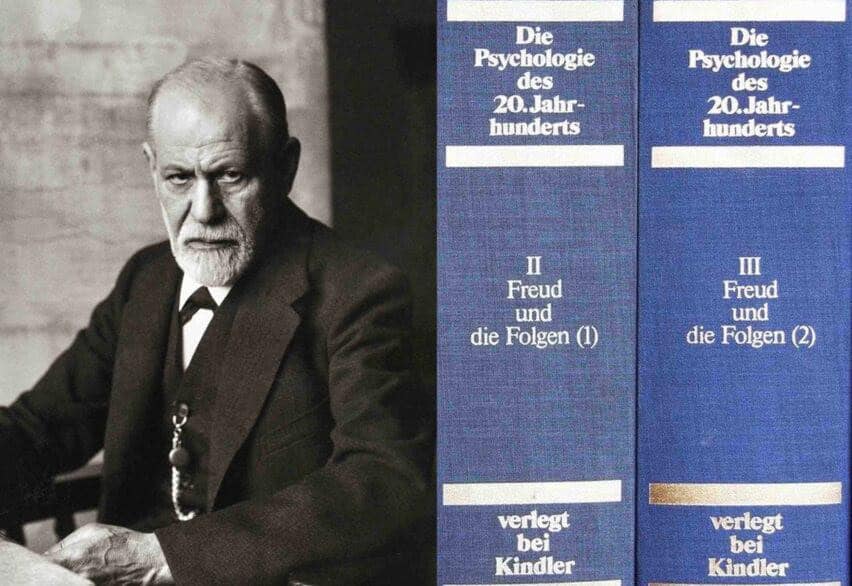
Anxiety is a universal human experience that has been addressed in various ways across literature, philosophy, religion, psychology, and medicine. In this survey, we explore the history of panic attacks, tracing the evolution of their psychiatric diagnosis over time.
The first written records describing anxiety are mentioned in the Epic of Gilgamesh in about 2000 B.C. Even the origin of the word “panic” has ancient roots. The Greeks called groundless fear “panikos.”
In essence, the evolution of the term “panic” and its psychiatric connotations reflects the continuous refinement of our understanding of anxiety. From its mythological origins to its contemporary clinical usage, “panic” serves as a linguistic bridge connecting ancient fears to modern psychiatric insights.
Read more about anxiety disorder:
- Treatment for Anxiety
- Generalized Anxiety Disorder
- Treatment for Panic Attacks
- Flying Phobia. The Fear of Flying
- Claustrophobia. Symptoms, Causes and Treatment
- Agoraphobia. Diagnosis and Treatment
- Treatment for Social Phobia
Research on Panic Attacks in the 19th and 20th Centuries
The terms “panic attack” or “panic disorder” are relatively young. These terms only entered psychiatry as a diagnostic entity in the late seventies. Meanwhile, panic disorder emerges as a distinct diagnostic category, marked by the recurrent occurrence of panic attacks with defined frequency. Often, this disorder intertwines with agoraphobia, further complicating the clinical picture.
Historically, the technical usage of “panic” diverges from its colloquial counterpart, denoting both abnormal group behaviour and acute anxiety states in individuals. The official psychiatric diagnosis is formalized for the first time in the diagnostic manual, the DSM-III. This classification underscores the evolving understanding of distinct forms of anxiety disorders, separating panic attacks from generalized anxiety.
In psychology, the study of anxiety has its origins in the late 19th century. It was Sigmund Freud who investigated anxiety and, in particular, the panic attacks. Considering today’s criteria, he presented the most detailed description of panic symptoms.
Freud also created the theoretical foundation of this disorder. He recognized the importance of environmental factors without neglecting the hereditary predisposition. Despite his pioneering research, Freud misunderstood the root cause of panic attacks by overestimating the impact of sexuality.
Emil Kraepelin’s Research on Anxiety
Kraepelin, a prominent figure in clinical psychiatry, documented cases of panic attacks and severe agoraphobia. He categorized various anxiety disorders, delineating generalized anxiety characterized by pervasive worry, obsessive thoughts, and compulsions. He also identified phobias, including insect phobias, agoraphobia, specific social phobia, and generalized social phobia.
Walter Canon. Fight-or-Flight Response
Walter Cannon, a physiologist and the intellectual descendant of Darwin, emphasized in 1919 the crucial roles of anger and fear as a survival strategy. His work on the secretion of epinephrine from the adrenal medulla led to the development of the concept of the fight-or-flight response. Despite some misconceptions about chemical transmission, Cannon’s research legacy remains influential in contemporary research on stress.
Sigmund Freud and the Concept of “Anxiety Neurosis”

The first description of anxiety disorders derives from Sigmund Freud. He created the first historical description of disorders that we call today “panic attacks” and “generalized anxiety disorder.” Freud described these disorders using the term “anxiety neurosis” (German: “Angstneurose”). As he wasn’t able to identify in both conditions any visible triggers, he called them “neurosis without conflict.”.
Freud on Panic Attacks
Freud interpreted anxiety attacks as exacerbations of an underlying basic anxiety.
The core symptom of “anxiety neurosis,” as Freud termed the condition, because “all its components can be grouped around the main symptom of anxiety,” is called “anxious expectation.” It is based on “usually latent but constantly lurking anxiety,” which can suddenly “break into consciousness” and “trigger an anxiety attack.” This “consists either solely of the feeling of anxiety without any associated idea or with the immediate interpretation of impending death, ‘blow,’ or impending madness…”.
Based on chronic anxiety… two groups of typical phobias develop… The first group includes the fear of snakes, thunderstorms, darkness, vermin… The other group contains agoraphobia…”.
Freud created the connection between the panic attacks without any obvious reason and phobic panic attacks triggered by certain objects or situations.
In his clinical observation, Freud emphasized the relevance of unconscious conflicts and the role of psychoanalysis to uncover their source.
Freud’s Description of Panic Attacks
On the symptomatic level, Freud’s description of the anxiety neurosis correlates astonishingly well with the current description of panic attacks. In his paper on “anxiety neurosis,” he wrote:
“I append here a list that includes only those forms of anxiety attack that are known to me:
- Disturbances of the heart action, such as palpitation.
- Disturbances of respiration, several forms of nervous dyspnea, attacks resembling asthma, and the like.
- Sweating, often at night.
- Tremors and shivering, easily confused with hysterical attacks.
- Ravenous hunger, often accompanied by vertigo.
- Diarrhea coming on in attacks.
- Locomotor vertigo.
- Congestions, including everything that has been termed vasomotor neurasthenia.
- Paresthesia (numbness). But these seldom occur without anxiety or a similar feeling of discomfort.”
When comparing the above-presented list of symptoms described by Freud with the criteria in the DSM classification, the level of agreement may be quite surprising.
Freud on Aetiology of Panic Attacks
In 1895, Sigmund Freud published a paper entitled “On the Grounds for Detaching a Particular Syndrome from Neurasthenia Under the Description ‘Anxiety Neurosis.” In this paper, he wrote:
“In some cases of anxiety neurosis, no etiology (root cause) at all is to be discovered. It is worth noting that in such cases there is seldom any difficulty in establishing evidence of a grave hereditary taint. But where there are grounds for regarding the neurosis as an acquired one, careful inquiry directed to that end reveals that a set of noxae and influences from sexual life are the operative etiological factors.”
Freud noticed the fact that there is a higher occurrence of anxiety symptoms running in the same family. For the cases without a family history, he related the origin of anxiety to sexual suppression.
Typical for his psychoanalytical theory, Freud overestimated the role of sexuality as an etiological factor. From today’s perspective (and the author’s own clinical experience), we can conclude that the Freudian link to suppressed sexuality is valid only in a very low percentage of anxiety disorders. Modern approaches to panic attack treatment and anxiety therapy in Dubai now emphasize evidence-based methods, focusing on cognitive-behavioral techniques and medical assessments over outdated psychoanalytic assumptions.
From Neurosis to Disorder
Looking back on the history of panic attacks and generalized anxiety, we will find old-fashioned psychoanalytical terms such as “neurosis”, “neurasthenia” or “hysteria”. Over time, these words “infiltrated” common language, gradually acquiring a negative overtone. In the current psychiatric nomenclature, psychiatrists have replaced the terms “neurosis” or “hysteria” with the more “politically correct” word “disorder.”
DSM III. Differentiating Panic Disorder from Generalized Anxiety Disorder
DSM-III, introduced in 1980, split anxiety disorders into two categories, panic disorder and generalized anxiety disorder (GAD). It was the official birth date of GAD as a diagnostic category.
One major argument for separating spontaneous panic disorder from generalized anxiety was the mistaken belief that they could be distinguished based on their response to medication. This idea was called “pharmacological dissection.”
A double-blind, placebo-controlled study by Klein showed that patients treated with imipramine experienced fewer panic attacks. However, more recent studies by Kahn and colleagues have disproved the notion that panic disorder is uniquely responsive to antidepressants while GAD is not. Contrary to Klein’s findings, Kahn demonstrated that antidepressants are also effective in treating GAD.
History of Panic Attacks. Developing the Diagnosis
Anxiety disorders are among the most common mental health conditions in the field of psychiatry. In the past 30 years, they have been categorized into different subtypes based on treatment approaches and underlying mechanisms. In this context, a key distinction is made between “directed” anxiety disorders, such as phobias, and “undirected” anxiety disorders, which are more generalized. Additionally, anxiety responses can be classified as short-term (phasic) or persistent (tonic). This classification differentiates panic disorder, characterized by sudden and intense anxiety episodes, from generalized anxiety disorder (GAD), where worry and tension are chronic and ongoing. Accurate assessments such as the German Panic Attack Diagnosis in Dubai are crucial in distinguishing between these disorders for effective treatment.
A panic attack is a sudden episode of extreme fear that peaks within minutes and typically lasts between 20 to 30 minutes. Typical for Panic Disorder, also known as episodic paroxysmal anxiety, are recurrent panic attacks with both physical and psychological symptoms.
The development of anxiety disorders can be understood through neurobiological models and learning theories, which explain how anxiety is triggered and maintained.


